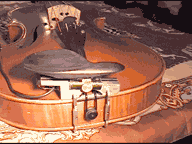
Written in November 2000 at the
Hochschule f. Musik Detmold, Abt. Münster
Author: Marc Nijdam
Supervisor: Prof. Hartmut Lindemann
| Contents from the Essay: | [Introduction | Summary | History of the Hold] |
|---|---|
| Project Summary: | [Measuring Results & Sound | Construction | Hardware Interface | Software Solution] |
| Links: | [Interesting link and where to download this essay] |
Many viola players have found eventually their own way in holding the instrument. If we take a look at first sight, we could say there are two mainstreams: people play with and people play without the shoulder rest. Although both 'styles' require their own technique, it is interesting to see and measure that with some people these differences are not so substantial as we might think. Research and literature in this area is still rather scarce. This project gives us more insight in the holding of the instrument. With a special developed chin rest, pressure could be measured during playing. Collected data from several test persons, who played with the use of this chin rest, made it possible to do some comparison. From the graphical representation of this data one can see in what way he or she is playing and learn from it. The technical background from this project is explained here in some details as well. It deals with the electronics around the sensor and the microcontroller, the mechanical construction of the chin rest, which is made easy adaptable to different heights, and not to forget the specially written software for the microcontroller as well as converting software to convert standard MIDI files to normal importable ascii files, which makes it all work!

Figure 1: Pressure Sensitive Chin Rest
In the first chapter of the essay we take a look at the way the holding evolved in history. We see much development with the invention of Ludwig Spohr in 1831: the chin rest:
Figure 2: Ludwig Spohr's invention: Chin Rest In his method "Violinschule" where it was presented, he writes that it gives a better hold of the violin. Next major step in the evolution of the hold of the violin or viola is the shoulder rest. Unlike Spohr's chin rest, the shoulder rest evolution is less clear. In literature it is first -functionally- mentioned in 1834, in P. Baillot's work "L'art du violon". He states that the space between the violin and the shoulder should be filled up with a little pillow or a folded piece of cloth. Peculiar thing here is that it seems that Baillot in Paris didn't know yet about the existence of Spohr's invention. It means that the combination of the shoulder and chin rest is of a more recent origin. The development in the 20th century is described with material from different famous players, like Ole Bull, Carl Flesch, Leopold Auer, Ivan Galamian, William Primrose, and other players like J. T. Carrodus, Prof. Carl Schroeder, Frank Thistleton. Next chapter in the essay is dealing with the question whether there is or is not a disposition for players to play with or without the shoulder rest. An analysis of all the factors which play a role in the decision to choose for the one or the other is made here as well. Conclusion is that a solution is hard to find. Although it is obvious that there are differences concerning the free space under the instrument, keeping the shoulder free from extra pressure and tension. Another difference is that the instrument can be easier held lower without the shoulder rest, implicating another way of playing with the right arm. Chapter three in the essay gives some advises and practical help, for players who try to learn playing without. It shows different models of chin rests from the GEWA catalog, some statistics. A recapitulation of the basic holding principles. Many exercises from Menuhin, Flesch and Sevcik concludes this chapter. Chapter four shows the graphical results of the tests with the special chin rest, from several players. Followed by an analysis. The chapter concludes with some project details.
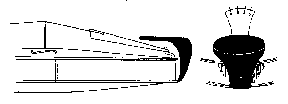
The history of the hold is currently not available in this version. A German language version is downloadable as a PDF file. Click on complete history of the hold to receive and view this PDF file.
A total of eight players were submitted to a test program. They played Kreutzer no. 11 in different tempi, each time with and without shoulder rest, except for tempo 80 and 100, where they could choose what they preferred. Pressure changes were recorded and processed with a spreadsheet to make them visible. During playing the viola was muted, with a very heavy mute, made of metal, as the vibrations from the sound distorted the measurement. Therefore sound is subordinate to the measuring result. Other results may be downloaded as a PDF file. Click on pressure log to receive and view this PDF file.
|
| |||||||||
|
| |||||||||
kreutzer tempo 40 with shoulder rest | |||||||||
|
| |||||||||
kreutzer tempo 40 without shoulder rest | |||||||||
|
| |||||||||
kreutzer tempo 60 with shoulder rest | |||||||||
|
| |||||||||
kreutzer tempo 60 without shoulder rest | |||||||||
|
| |||||||||
kreutzer tempo 80 without shoulder rest | |||||||||
|
| |||||||||
kreutzer tempo 100 without shoulder rest | |||||||||
The base of the chin rest is constructed of aluminium, which is relatively easy to process, and gives its necessarily strength and lightness. Because different players should be able to play with and without the shoulder rest, it was necessary that the chin rest could be adapted in height easily. Therefore I used a tilted sliding mechanism, which had the combined advantage that people with short necks, generally have also short arms, and want to hold therefore the instrument more in the middle, where however people with long necks have generally long arms and don't need to hold the instrument over there. See the next images, which show the height adjustment.
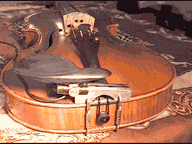 |
 |
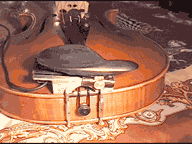 |
| Chin Rest high | Chin Rest middle | Chin Rest low |
The "part which rests the chin", is fixed on a hinge. This makes it easy to place the thin sensor, which is constructed in the hinge.
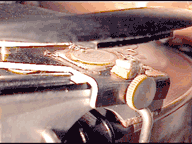 |
| Chin Rest mounted on a hinge |
Usefull information can be found at:
The chin rest fitting system (Original link was: http://www.imedia.ie.utoronto.ca/people/jcho/vss.htm)